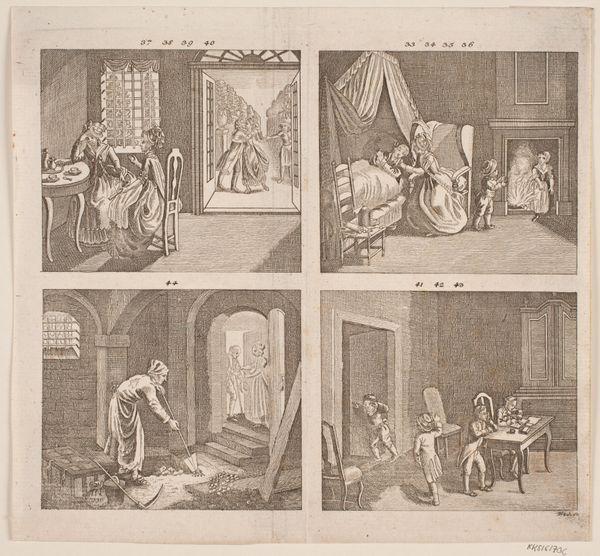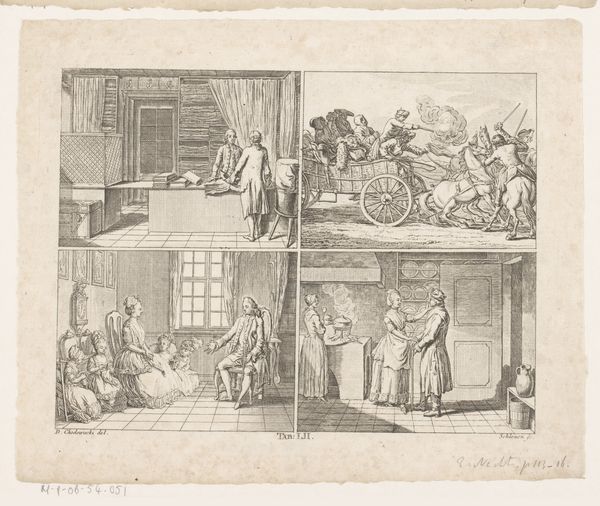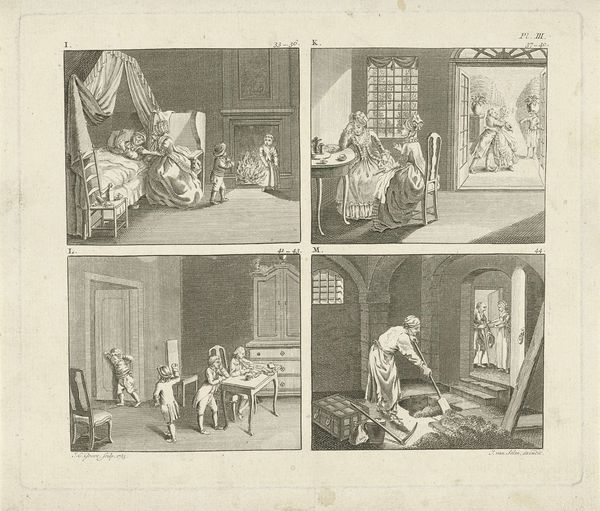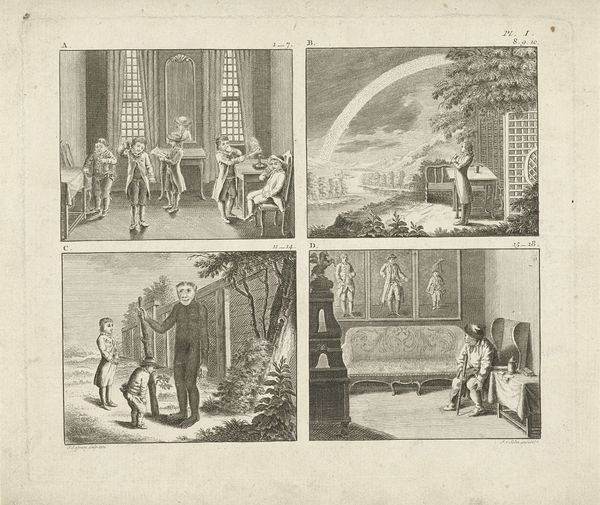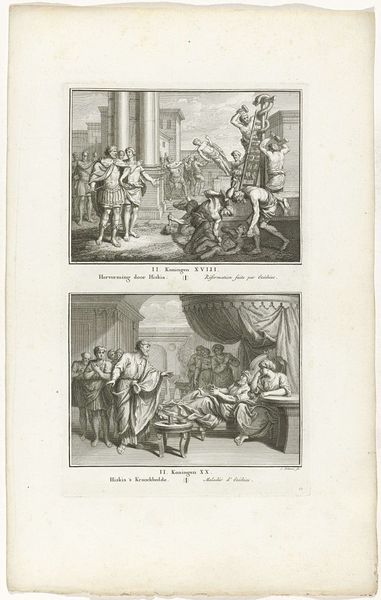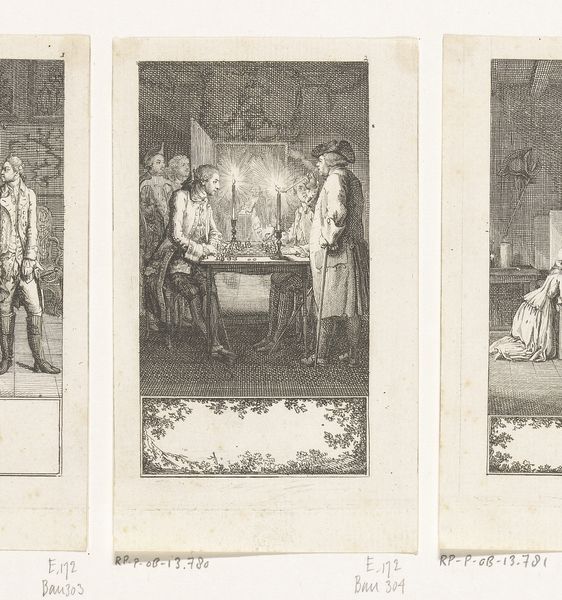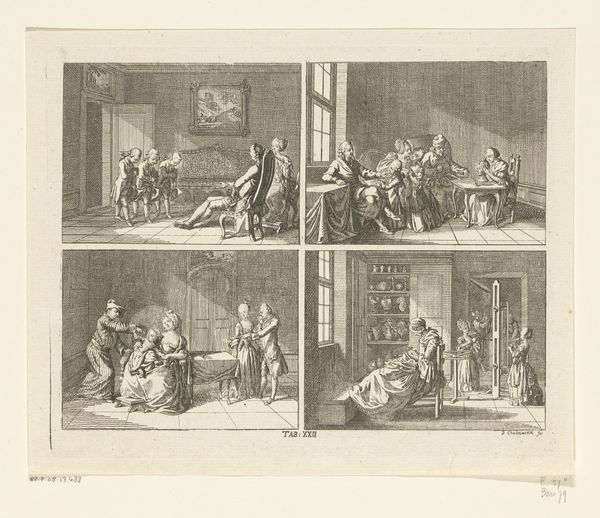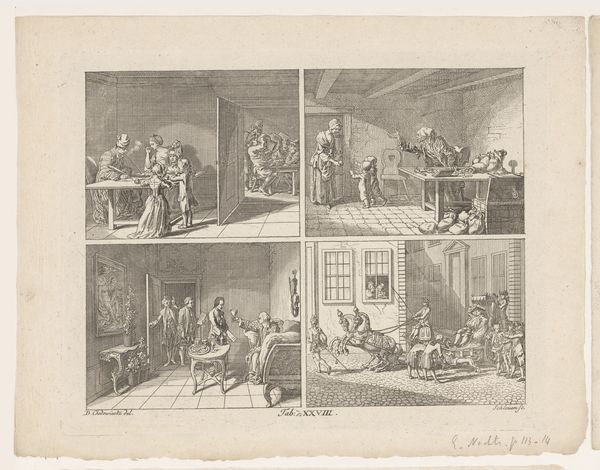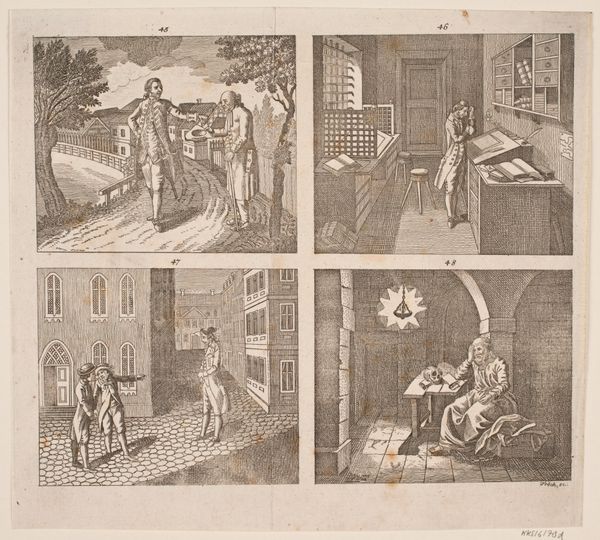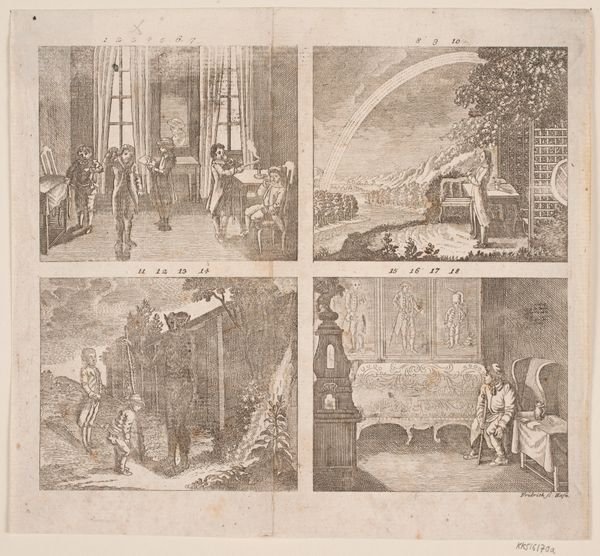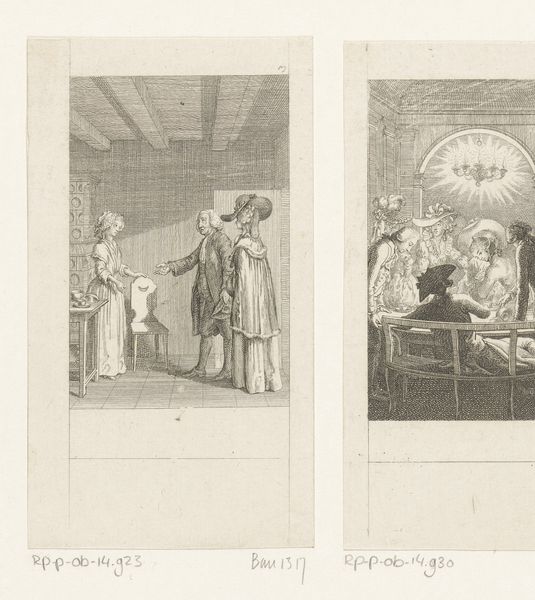
Vier voorstellingen over de eigenschappen van de ziel, plaat. 2 1786 - 1806
0:00
0:00
print, etching, engraving
#
neoclassicism
# print
#
etching
#
old engraving style
#
genre-painting
#
history-painting
#
engraving
Dimensions: height 172 mm, width 204 mm
Copyright: Rijks Museum: Open Domain
Editor: Here we have "Vier voorstellingen over de eigenschappen van de ziel, plaat. 2", created between 1786 and 1806 by Jan Evert Grave. It's a print consisting of etching and engraving, divided into four scenes. The old engraving style definitely sets a mood… I’m curious, what aspects of the artwork stand out to you? Curator: As a materialist, I immediately consider the socio-economic context of printmaking at this time. These reproductive techniques made imagery accessible to a broader public, facilitating the spread of ideas and, of course, propaganda. What can the specific subject matter tell us about the values and concerns of its intended audience? Editor: That’s an interesting point! So, what can we say about the themes depicted in the print? We have images of children playing, family scenes, and even a ship setting sail. Curator: Exactly! Think about the labor involved in creating and distributing these prints. Etching and engraving demanded skill and time. Who was buying these images, and what messages were they consuming? Also, consider the raw materials: the paper, the ink, the metal plates. Where did these originate, and what networks of trade facilitated their production and dissemination? Editor: I see what you mean. It makes you think about the bigger picture – how something seemingly simple connects to much wider economic and social systems. What does this level of production value say about it? Curator: It signals a shift in both artistic creation and consumption. We can view this print as less about pure artistic genius and more as a manufactured commodity circulating within a specific market. It served a function beyond aesthetics, reflecting and reinforcing social values for a burgeoning middle class. Editor: That’s really changed how I see it. I was initially drawn to the quaint scenes, but now I'm considering the processes behind its creation. Thank you! Curator: Indeed! By examining the materials and production, we can unveil a more profound understanding of art's role within its specific historical moment.
Comments
No comments
Be the first to comment and join the conversation on the ultimate creative platform.

